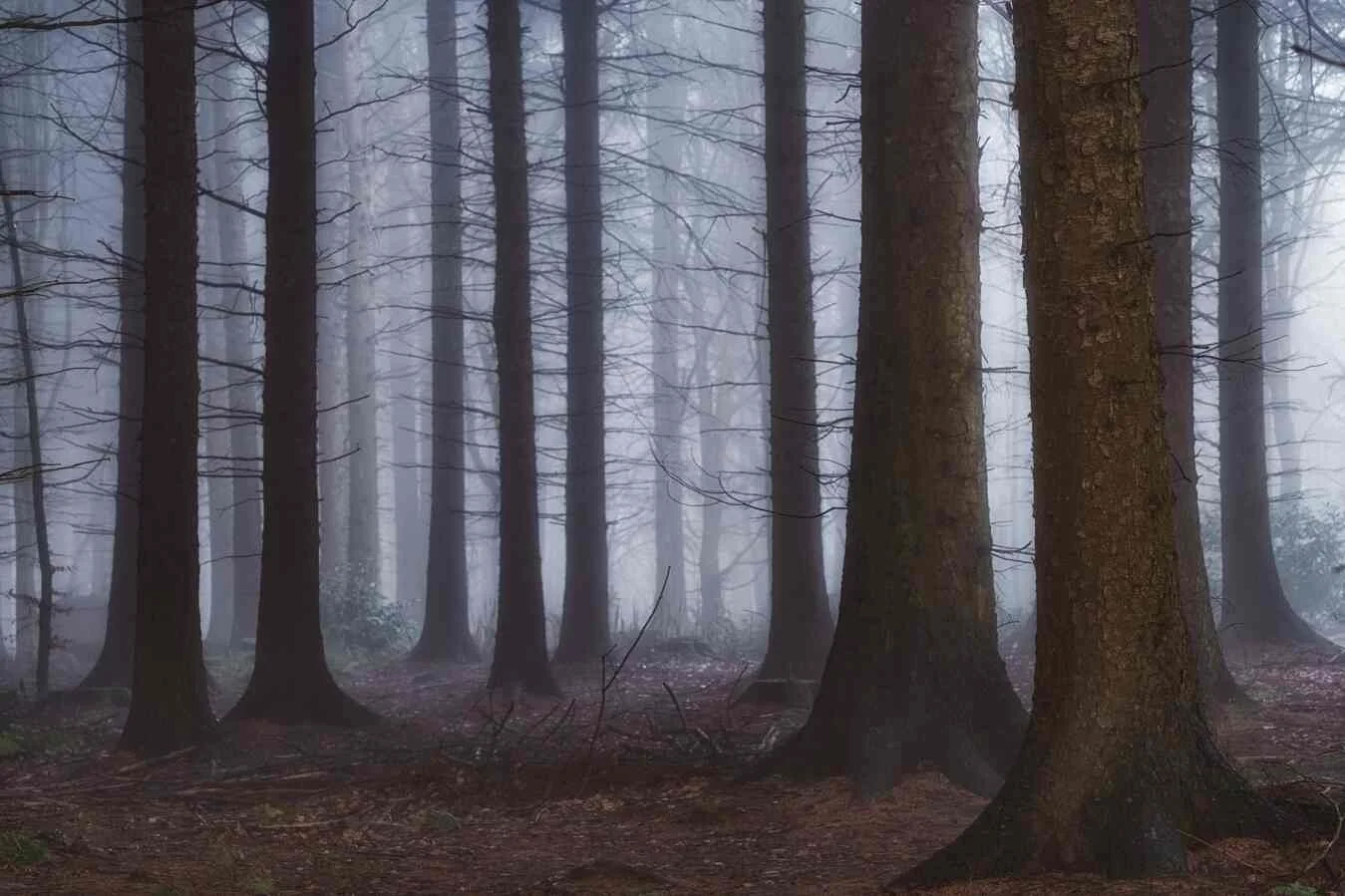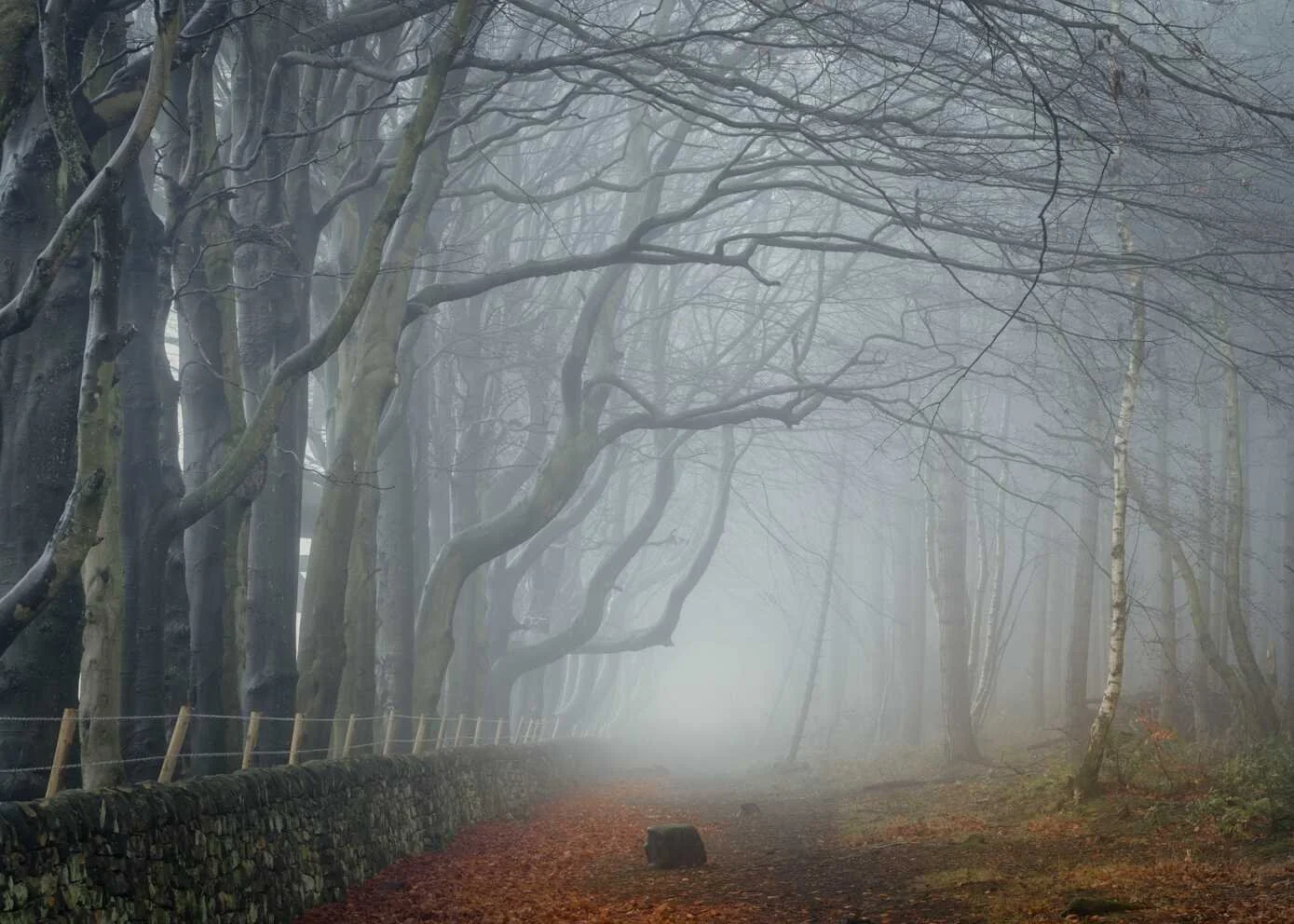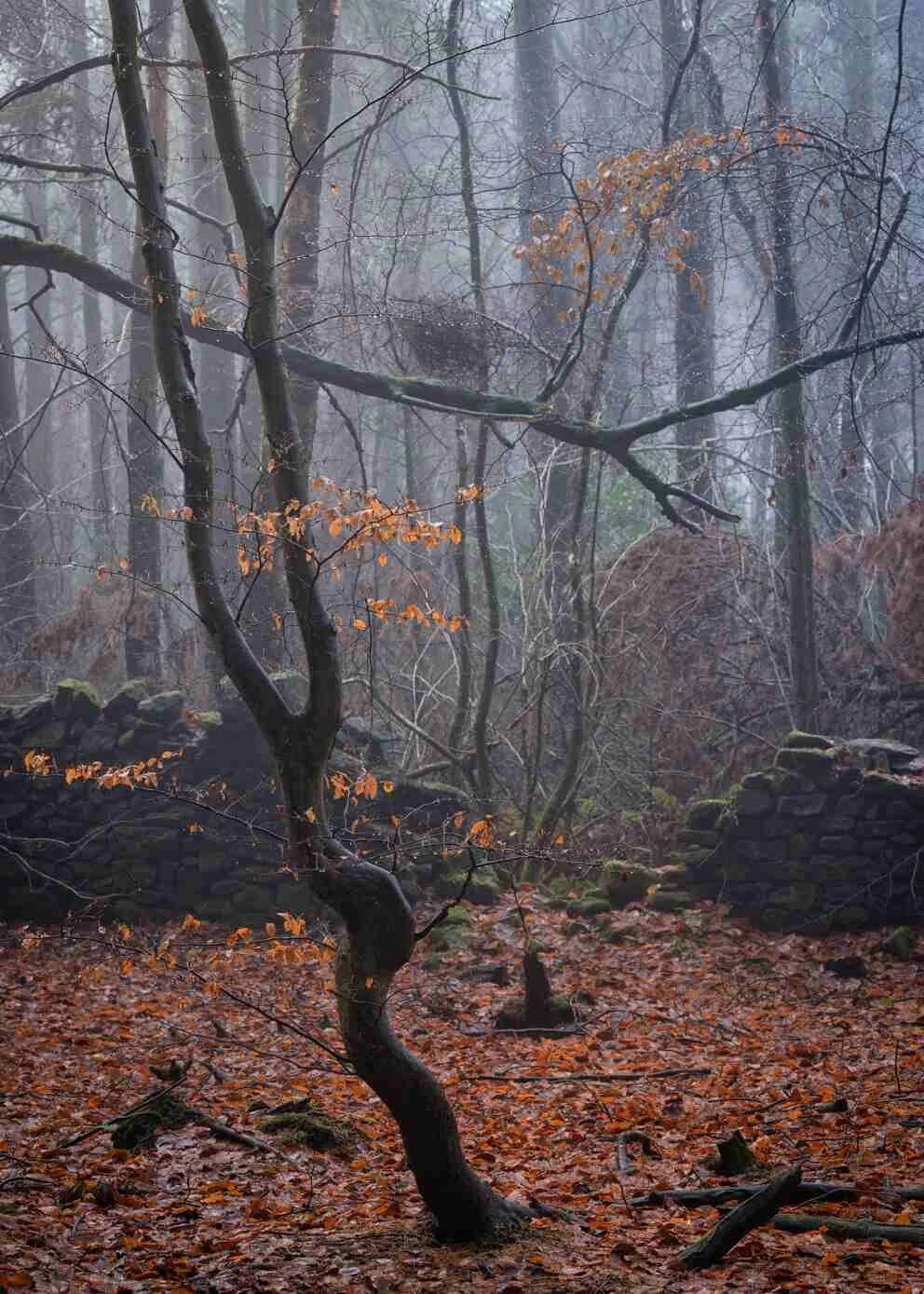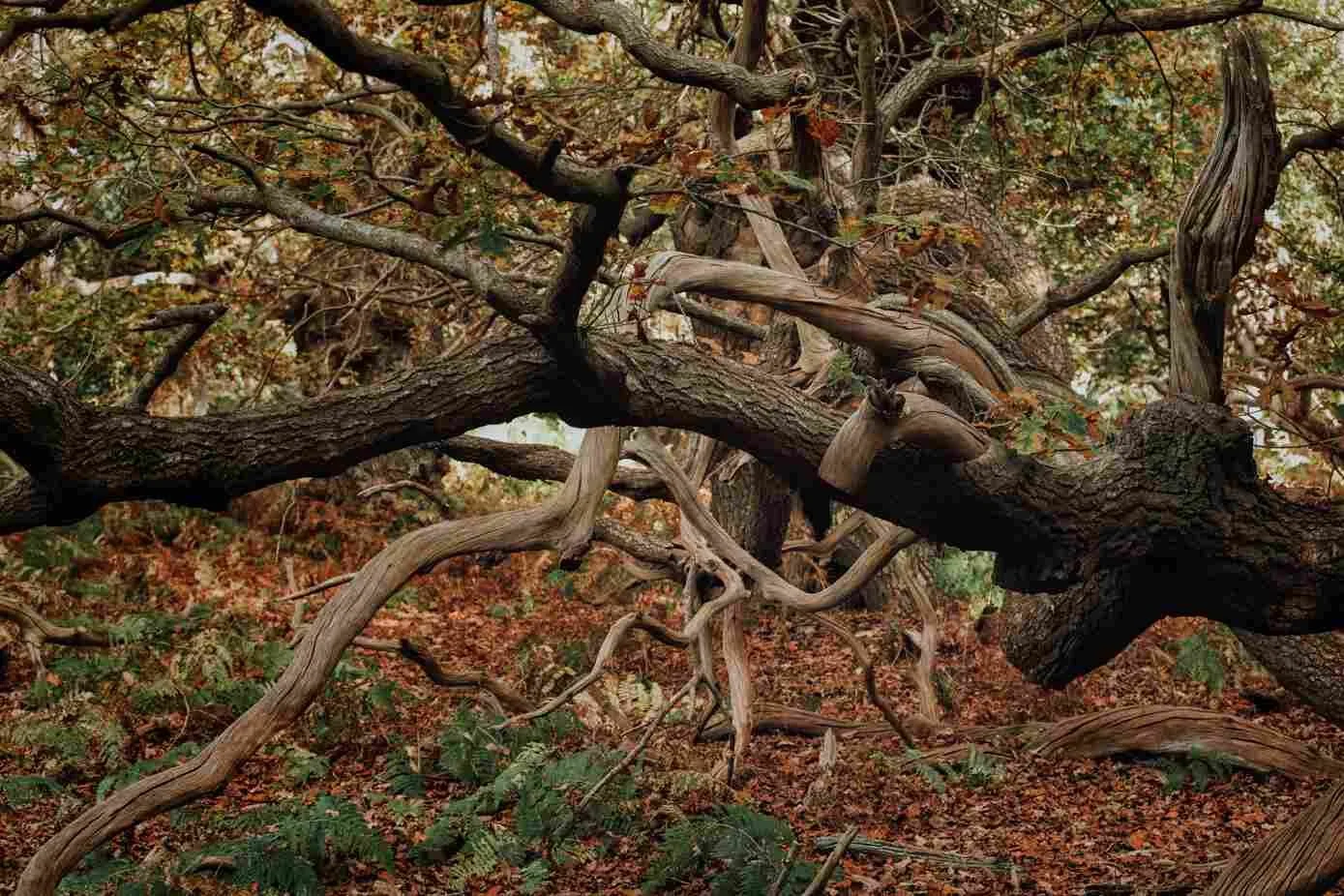CLASSES
Beginners Photography Course
Weekly Classes - Coventry
Lightroom Photo Editing Course
Weekly Classes - Coventry
RPS Accreditation
Online Mentoring for RPS
Photography Mentoring
Monthly Assignments


To Shoot Your Products or Services
Professional photos for your product, property, services and company


Table of Contents Show
Venturing into the heart of a woodland is an enchanting experience. The tranquil ambience, the interplay of light and shadow, and the intricate beauty of nature make mastering woodland photography composition a captivating pursuit. Whether you are an amateur photographer seeking to refine your woodland photography composition skills or a seasoned professional seeking new inspiration, this comprehensive guide will provide valuable techniques and insights to elevate your woodland pictures and composition to new heights.
In this article, we will delve into various woodland photography tips, including understanding light in the woodland, crafting compelling photography composition, the importance of scouting, and the art of storytelling through images. By the end, you will have the knowledge and tools to capture the magic of nature in the most captivating way possible with your woodland photography.
"I have been passionate, some may say obsessed, about woodland pictures for over ten years. The benefits to our mental health and well-being are well documented by spending time in woodlands and forests."

Woodland photography is not just a hobby; it's a passion that has consumed me for over a decade. The allure of capturing the beauty of nature, particularly in woodlands, has become an integral part of my life, fueling my forest photography ideas. And it's not just about aesthetics; there's a scientific basis behind the positive impact of spending time in these natural settings on our well-being.
Numerous studies have shown the therapeutic benefits of nature, particularly woodlands and forests. This concept is so valued in Japan that they have a term for it: "forest bathing" or shinrin-yoku. It involves mindfully and intentionally spending time in wooded areas to reduce stress, boost mood, and enhance overall well-being through the therapeutic benefits of nature.
Forest bathing has gained recognition worldwide, with many embracing its principles and experiencing its positive effects firsthand. The calming effect of being surrounded by trees, the gentle rustling of leaves, and the earthy scent of the forest can evoke a sense of peace and tranquillity, offering stress relief and fostering a deeper connection with nature.
As an avid woodland photographer, I have experienced the profound impact of spending time in these natural havens. With every click of the shutter, I capture not just images but also moments of serenity and inspiration. Observing and framing nature's wonders through the lens brings me profound joy and fulfilment.

In 2024, I am committed to deepening my engagement with UK woodland photography, venturing into ancient woodlands and forests across the UK, such as the iconic Sherwood Forest and the ancient Welsh woods. My goal is to uncover the hidden gems within these woodlands and immortalise their unique beauty through my lens, from the storied grandeur of Sherwood Forest to the enchanting Welsh ancient oak and birch woodlands, each with a character all its own to be captured and cherished.
Through my photography, I aim to do more than display the splendour of woodlands; I aspire to heighten awareness about their conservation and underscore their ecosystem importance. These natural havens are crucial for the planet's health and nurturing our emotional well-being and inner peace.
In conclusion, my woodland photography journey has profoundly transformed me, enriching me personally and artistically. It has become a source of solace and inspiration, fostering a profound bond with nature and offering therapeutic benefits. As I delve into the enchanting realm of woodlands, I aspire to encourage others to discover these natural marvels through my woodland pictures.
In this article, I am eager to divulge my photography tips and tricks, tailored explicitly to capture the essence of woodlands and create stunning forest photos.
Light, the lifeblood of photography and particularly crucial in woodland light scenarios, is essential for crafting captivating images. Light morphs into various guises in the woodland, from the gentle, diffused glow of early morning to the stark, contrasty beams of midday. Mastering the nuances of light in photography will empower you to set distinct moods and articulate your artistic vision with clarity and impact.
In woodland photography, adapting to the varying lighting conditions is vital to expressing your artistic vision. Each type of light, the balanced illumination of an overcast day or the stark drama of morning sun shadows, presents its narrative possibilities and aesthetic challenges, infusing each image with its unique allure.
Consider two contrasting examples to demonstrate the dramatic effects of different lighting conditions. The first, taken on an overcast day, showcases the subtle nuances of overcast light with a gentle contrast that softens the landscape. The second, captured with the morning sun just above the horizon, is bathed in a warm glow, accentuating the interplay of light and shadows and creating a striking visual narrative.


It is crucial to understand that there are no absolute 'right' or 'wrong' choices when it comes to lighting in woodland photography. It's about selecting the lighting that enhances the photography styles and colour schemes you're aiming to showcase in your images. If you're committed to a specific aesthetic, you might adhere to precise guidelines regarding the times and conditions for your shoots. Nevertheless, welcoming a variety of lighting conditions can lead to a more varied and dynamic portfolio.
Among the most cherished conditions for woodland photographers is the enchanting presence of fog or mist. Mist photography, especially in the early morning, acts as a natural diffuser, softly tempering the light as it filters through the trees and imparting a mystical atmosphere to the trunks. Fog adds depth to the scene and creates a smooth transition from light to shadow, endowing the image with a surreal beauty.
Capturing photographs under foggy conditions requires an appreciation of how the mist interacts with the trees and the environment. Seek out chances to capture the delicate interplay between light and shadow and the subtle colour gradients that diffused light can bring. Exploring different perspectives and viewpoints can reveal the unique charm that fog adds to the woodland setting.

Photography composition is the foundation of any impactful photograph, and mastering your skills in this area for woodland photography is essential. A meticulously composed shot can captivate the viewer, stir emotions, and convey a compelling narrative. Here are some strategies to aid you in crafting exceptional photography compositions in the forest.
The isolation technique is a potent method that allows you to accentuate the beauty of individual trees amidst the dense woodland. By focusing on a tree that contrasts with its surroundings, you can produce visually striking images that celebrate your subject's distinctive character and structure.
To achieve subject isolation, scout for trees with unique features, such as intriguing shapes, textures, or colours. Pay attention to the tree's placement in the frame and utilise techniques like shallow depth of field or selective focus to ensure the subject stands out against the backdrop. Isolation can be further highlighted by atmospheric elements like fog, which provides separation and enhances the image's depth.

The framing technique involves using elements within the scene to encircle your subject, adding depth and context to your photographs. In woodland photography, you can use the surrounding trees, branches, or foliage as natural frames to direct the viewer's gaze towards the focal point.
To master framing in photography, particularly within the context of woodland scenes, seek out captivating foreground elements that can serve as a natural frame. Position yourself strategically so the frame guides the viewer's eye to the subject, creating depth and immersion in your woodland images. Explore various angles and perspectives to uncover the most effective options that amplify the visual impact of your photos through framing in photography.
Creating a harmonious composition in woodland photography requires thoughtful consideration of how different elements within the frame interact. Look beyond individual trees and strive to capture the unity and balance among groups of trees, which contributes to a cohesive sense of a harmonious composition in your images.
When building composition photography, it's crucial to ask yourself: What is the image's main focus? How can I eliminate distractions to establish a clear focal point? How does the light influence the scene, and how can I position myself to make the most of it? By evaluating the scene and making deliberate compositional choices, you can craft images that are aesthetically appealing and rich in storytelling through composition photography.

Scouting for photography is a vital component of successful woodland photography, which can significantly improve your chances of capturing stunning images. By getting to know the area, researching potential spots, and understanding the woodland's unique features, you can uncover creative opportunities and increase your chances of photographing remarkable scenes through effective scouting for photography.
To truly grasp the essence of woodland and uncover its hidden gems, dedicate time and effort to thorough woodland exploration. Revisit the area at various times throughout the day and across different seasons to observe the dynamic conditions and lighting. Keep an eye out for unique features such as distinctive tree formations, intriguing patterns, or enchanting natural elements that could become the highlight of your photographs, enhancing your woodland exploration experience.
Leverage online tools like Google Maps to pinpoint new woodland areas for your photographic adventures. Additionally, peruse photography platforms like Flickr to view images captured in those woodlands. This research can provide a glimpse of what to anticipate and can ignite your creative vision for future sessions, enriching your use of photography platforms for inspiration. Enclosed below a custom Google Map I created for my woodland photography walks around Warwickshire.

On scouting excursions, capture reference images and make notes to document potential planning compositions, observe lighting conditions, and identify exciting elements. Utilise your smartphone or a notebook to record your ideas, observations, and any particular details you wish to recall for subsequent photography outings, ensuring your planning compositions are well-prepared.
Reference images are an essential tool for photographers, acting as a crucial visual guide when planning compositions and helping to recreate specific lighting conditions or atmospheres that are particularly captivating. These reference images, along with detailed notes, can also serve as valuable references, reminding you of particular spots, angles, or techniques you want to explore further.
Woodland photography often captures enchanting conditions, such as misty mornings or the warm glow of golden-hour light. By thoroughly scouting the area, you can become familiar with the patterns and behaviours of the woodland, which makes predicting and anticipating conditions like misty mornings more likely and easier.
Pay attention to factors that influence the appearance of mist, such as nearby rivers or sources of moisture. Study the weather patterns and utilise weather apps to track potential foggy or atmospheric conditions. Being prepared and vigilant by understanding these weather patterns will significantly increase your chances of capturing stunning woodland photographs.

Finding joy in photography should be a source of relaxation and a means to connect with nature and express your creativity. While woodland photography can be challenging and require patience and persistence, it's important to remember to relax and enjoy the process, allowing the joy in photography to shine through your work.
Setting high expectations can lead to disappointment and frustration. Instead, adopt a mindset of exploration and experimentation, allowing yourself to be open to unexpected opportunities and creative discoveries. Be flexible and adaptable, embracing the changing conditions and finding beauty in the unexpected, which is at the heart of a mindset of exploration in photography.
While planning, scouting, and capturing images, it's easy to get caught up in the technical aspects and forget to appreciate the beauty of the woodland itself. Take moments to pause, observe, and immerse yourself in the natural surroundings. Allow yourself to be present and fully experience the magic of the woodland, as this deep connection with nature will enhance your creativity and enrich your photographs.

Remember that landscape photography is a journey of growth and self-expression. Each photograph you capture reflects your unique perspective and artistic vision. Embrace the challenges, learn from your experiences, and enjoy the journey of capturing the beauty of the woodland through your lens, as this is the essence of landscape photography.
Carrying essential equipment is crucial if you want to capture the best forest pictures and create stunning woodland pictures. To maximize your experience, my advice is to travel with the essential equipment and nothing else.
A polariser filter is a must-have accessory for woodland photography as it helps to reduce glare and enhance colours. It can greatly improve your photography composition and the overall quality of your woodland images.
In addition to the polariser filter, a tripod is another indispensable tool for capturing sharp and steady shots in the forest. It provides stability and helps to eliminate camera shake, ensuring your forest pictures come out clear and crisp.
When it comes to lenses, there isn't a single best lens for woodland photography as it depends on various factors. However, it is recommended to have a wide-angle lens, a telephoto lens, and a macro lens in your gear kit. These lenses offer different perspectives and allow you to capture the forest's intricate details while bringing distant subjects closer.
Equipped with the right gear, such as a polariser filter, tripod, wide-angle lens, telephoto lens, and macro lens, you'll be well-prepared to capture stunning woodland images and excel in forest photography composition. These essential photography accessories, including the polariser filter and sturdy tripod, will enhance the clarity and quality of your shots, while the wide-angle lens, telephoto lens, and macro lens will offer diverse perspectives and details in your forest pictures.
Remember, it's not about the quantity of equipment but rather employing the right tools strategically to create captivating forest pictures and convey the beauty of the woodland in your images, enhancing your forest photography composition. Utilising the right tools, like a polariser filter or a reliable tripod, can significantly affect the outcome of your forest photography.

The woodland photography genre is a captivating and rewarding field that beckons you to explore the intricate beauty of nature and unleash your creative potential. By understanding the importance of light, creating compelling compositions, thoroughly scouting locations, and embracing the process, you can capture breathtaking images that convey the magic and tranquillity of the forest. Delving into the woodland photography genre allows you to fully appreciate the nuances of natural light and composition.
Keep in mind that mastering the woodland photography genre is a continuous learning process, and the more you immerse yourself in this captivating field, the more your creative potential and artistic vision will evolve. So, grab your camera, venture into the heart of the woods, and let your creativity bloom as you capture the enchanting world of nature through your lens. Your artistic vision will guide you in capturing the essence of the woodland photography genre, as you grow and refine your skills with each shot.
I run outdoor workshops all year round, and many include woodland photography. Some are specific to seasonal woodlands, bluebells in spring, autumn colour in October and November at carefully selected locations around the UK. I have run woodland photo walks in Warwickshire for the last five years and will continue to return to some of my favourite spots. I also intend to expand the list of woodland photo spots this year across other counties. Last year, I launched a new woodland masterclass aimed at teaching and guiding clients on all aspects of woodland images from theory, camera settings, composition, and approach, followed by a practical and then a final session on post-production to edit the woodland images made on the day.

Alan is a professional photographer and tutor with over fifteen years of experience delivering photography education and commercial photography services across the UK.
Alan Ranger's exceptional professional credentials, accredited by the BIPP (British Institute of Professional Photography), have earned him the esteemed status of an approved photography training provider for renowned brands like Jaguar Land Rover. Moreover, he has had the privilege to deliver more than 30 enlightening lectures on photography education at the prestigious Xposure International Photography Festival in the UAE.
In addition, Alan has mentored and taught over 5,000 photography enthusiasts over the last fifteen years. Through his varied service approaches suited to each individual.
Beyond his professional pursuits, Alan has also collaborated with schools to organise photography workshops for children with special needs. By providing them with this platform, he empowers them to express themselves creatively and discover their unique perspectives through a camera lens.
Environmental consciousness is at the core of Alan's business ethos. He takes great pride in adopting green and responsible practices throughout his operations, ensuring that his business and events maintain a carbon-neutral footprint.
In conclusion, Alan Ranger is an expert in his field and a compassionate educator who believes in photography's transformative power. Through his guidance and support, individuals can unlock their creative potential and embark on a journey of self-discovery in the captivating world of photography.

